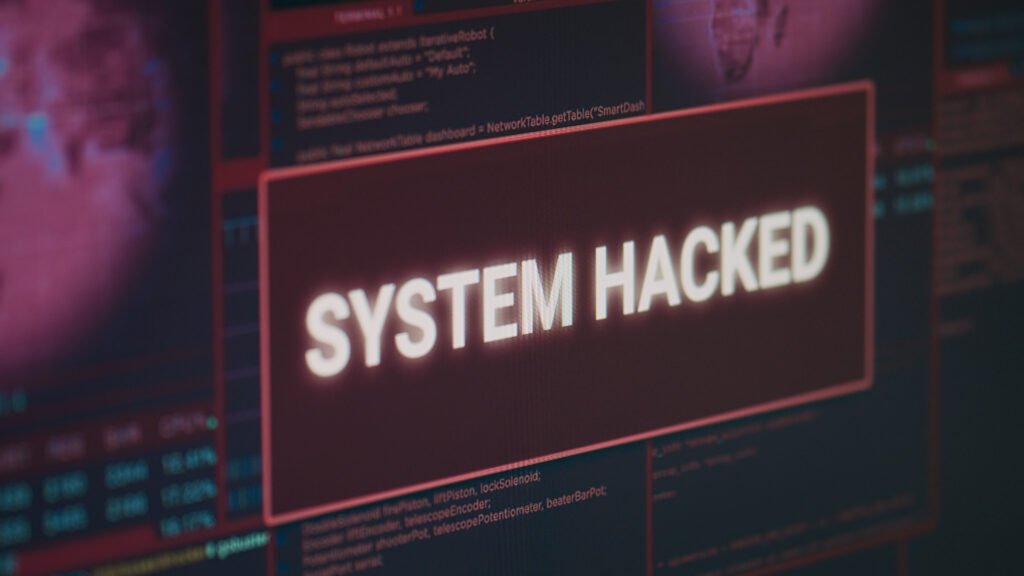Cloud Platforms as Targets for Hackers: How to Stay

How to Stay Safe: When most people think about cyberattacks, they imagine large corporations, government agencies, or global financial institutions being targeted. But here’s the truth: small businesses are some of the most frequent victims of hackers. In fact, reports show that nearly half of all cyberattacks worldwide target small and medium-sized enterprises (SMEs).
The reason is simple—hackers see small businesses as the “low-hanging fruit” of the digital world. They often lack the resources, tools, and security expertise that big corporations have, making them easier to exploit. How to Stay Safe: By investing in reliable cybersecurity solutions, training employees to recognize threats, and regularly updating systems, small businesses can significantly reduce their risk of becoming easy targets.
In this blog, we’ll explore why small businesses are prime targets for hackers in 2025 and provide practical strategies to keep your business safe.
Why Hackers Target Small Businesses
1. Limited Cybersecurity Budgets
Unlike large corporations with dedicated IT teams, small businesses often operate with tight budgets. Many see cybersecurity as a “nice-to-have” rather than a necessity. This lack of investment makes them an easy target for hackers looking for vulnerable systems. How to Stay Safe: Prioritizing cybersecurity, even with limited resources, by using affordable security tools, enabling multi-factor authentication, and seeking expert guidance can help small businesses strengthen their defenses against attacks.
2. Valuable Data, Just Like Big Companies

Small businesses handle sensitive data too—such as customer records, payment details, or intellectual property. Hackers don’t care about the size of the company; they care about the value of the data. Even a small retail shop stores credit card numbers, and a local clinic holds confidential health records. How to Stay Safe: Encrypting sensitive information, securing payment systems, and following strict data protection practices can help small businesses safeguard valuable customer and business data from cybercriminals.
3. Weak Passwords and Poor Security Practices
Hackers know that employees in small businesses often reuse weak passwords across multiple accounts or neglect to update them regularly. Without strict security policies, even a simple phishing email can give attackers the keys to an entire network. How to Stay Safe: Enforcing strong, unique passwords, implementing multi-factor authentication, and regularly updating login credentials can significantly reduce the risk of unauthorized access.
4. Lack of Employee Training

Employees are the first line of defense against cyber threats. Unfortunately, small businesses often skip cybersecurity training due to time or budget constraints. This leaves employees vulnerable to falling for phishing scams, malicious downloads, or social engineering attacks. How to Stay Safe: Providing regular cybersecurity awareness training, simulated phishing exercises, and clear reporting procedures can empower employees to recognize and respond to threats effectively.
5. Supply Chain Vulnerabilities
Small businesses are often part of larger supply chains. Hackers target them as a backdoor entry to bigger organizations. For example, a compromised local vendor could give cybercriminals access to a multinational corporation’s data.
6. Assumption of Being “Too Small to Target”
Perhaps the biggest mistake small business owners make is believing they’re too small to attract hackers. Cybercriminals exploit this mindset, knowing that these businesses rarely implement strong defenses. How to Stay Safe: Small businesses should adopt a security-first mindset by enforcing strong password policies, enabling multi-factor authentication, and investing in basic but reliable cybersecurity solutions to close common gaps.
The Most Common Cyber Threats Small Businesses Face
- Phishing Scams – Fake emails and messages trick employees into revealing passwords or financial details.
- Ransomware Attacks – Hackers encrypt business files and demand ransom payments to unlock them.
- Business Email Compromise (BEC) – Attackers impersonate CEOs or vendors to trick employees into transferring money.
- Malware Infections – Malicious software disrupts systems or steals sensitive information.
- Insider Threats – Employees (maliciously or accidentally) compromise company data.
- DDoS Attacks – Hackers flood websites with traffic, making them unavailable to customers.
- Data Breaches – Unsecured databases expose customer and business information.
Real-World Impact of Cyberattacks on Small Businesses

The consequences of a cyberattack can be devastating for small businesses:
- Financial Loss: The cost of recovery, ransom payments, and lost revenue can cripple operations.
- Reputation Damage: Customers may lose trust after a data breach.
- Legal Penalties: Non-compliance with data protection laws can lead to fines.
- Business Closure: According to studies, 60% of small businesses shut down within six months of a cyberattack.
This shows that cybersecurity isn’t just an IT issue—it’s a matter of survival.
How Small Businesses Can Stay Safe
The good news? You don’t need a massive budget to build strong cybersecurity defenses. Here are practical, effective steps small businesses can take in 2025:
1. Strengthen Password Security
- Use strong, unique passwords for every account.
- Implement multi-factor authentication (MFA).
- Encourage the use of password managers to avoid reusing credentials.
2. Keep Software and Systems Updated
Hackers exploit outdated software. Ensure:
- Operating systems, applications, and plugins are regularly updated.
- Automatic updates are enabled wherever possible.
- Old, unused software is removed to reduce vulnerabilities.
3. Educate Employees on Cybersecurity
Human error is the leading cause of breaches. Provide employees with:
- Phishing awareness training.
- Guidelines on spotting suspicious emails and links.
- Regular refresher courses to stay updated on new threats.
4. Backup Data Regularly
Ransomware attacks can destroy business continuity. To protect against this:
- Schedule regular backups of all critical data.
- Store backups in secure, offline locations.
- Test recovery processes to ensure backups actually work.
5. Invest in Basic Security Tools
You don’t need enterprise-level solutions to get protected. At a minimum, small businesses should have:
- Firewalls to block unauthorized access.
- Antivirus and anti-malware software.
- Endpoint detection tools for real-time monitoring.
6. Protect Wi-Fi and Remote Access
- Use strong encryption (WPA3) for Wi-Fi networks.
- Provide separate guest networks for customers.
- Use VPNs (Virtual Private Networks) for remote employees.
7. Secure the Supply Chain
- Vet vendors and partners for their cybersecurity practices.
- Require third parties to comply with minimum security standards.
- Monitor supplier activity for unusual behavior.
8. Develop an Incident Response Plan
Prepare for the worst-case scenario with a clear action plan:
- Identify roles and responsibilities in case of an attack.
- Have a process for communicating with customers and authorities.
- Regularly test the plan with simulated attack drills.
Final Thoughts
Small businesses may not have the same resources as large corporations, but that doesn’t mean they’re helpless. In fact, being proactive and vigilant can make all the difference. How to Stay Safe: Regularly backing up data, using trusted security software, and conducting periodic security audits can empower small businesses to stay ahead of potential threats.
Hackers target small businesses precisely because they expect weak defenses. By strengthening passwords, training employees, backing up data, and using affordable security tools, even the smallest company can build strong protection against cyber threats. How to Stay Safe: Implementing strong access controls, updating software regularly, and seeking professional cybersecurity support can further enhance protection and reduce the risk of costly breaches.
In 2025, cybersecurity is not a luxury—it’s a necessity. For small businesses, it could mean the difference between growth and closure.
If you’re a business owner, take action today. The cost of prevention is far less than the cost of a cyberattack. Protect your business, your customers, and your future. How to Stay Safe: Invest in reliable cybersecurity solutions, regularly back up data, train employees on threat awareness, and consult with experts to ensure your business stays secure against evolving cyber threats.